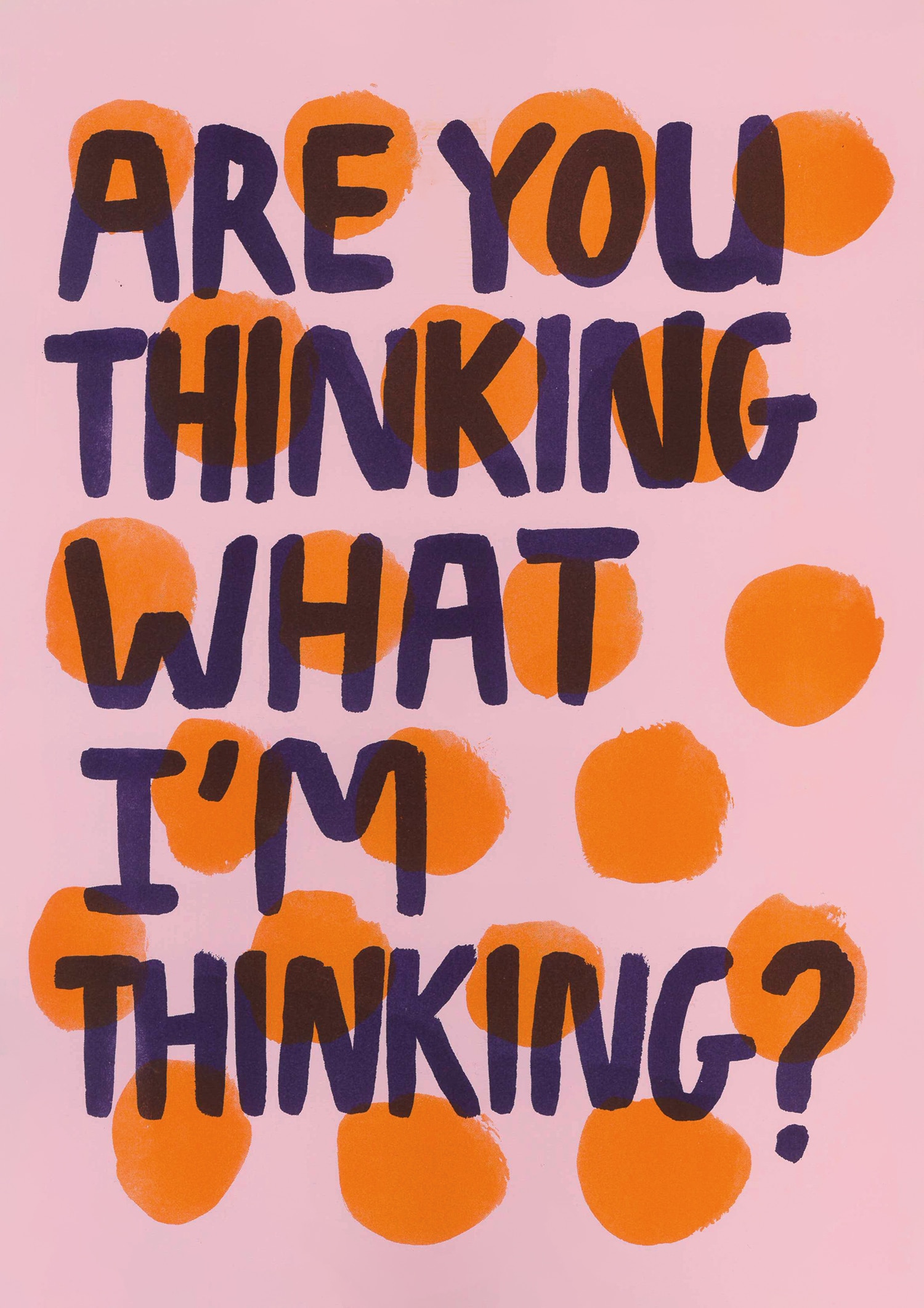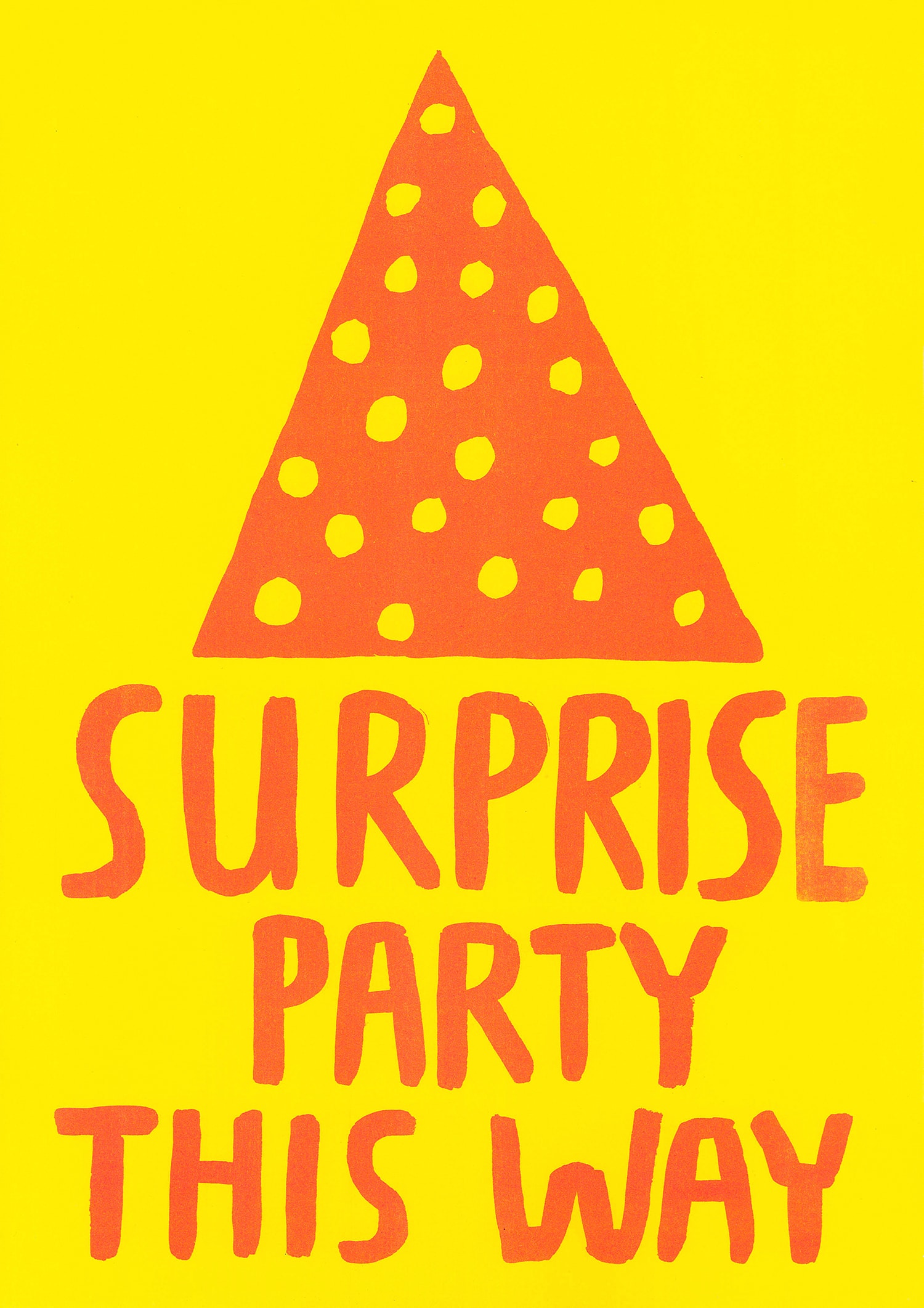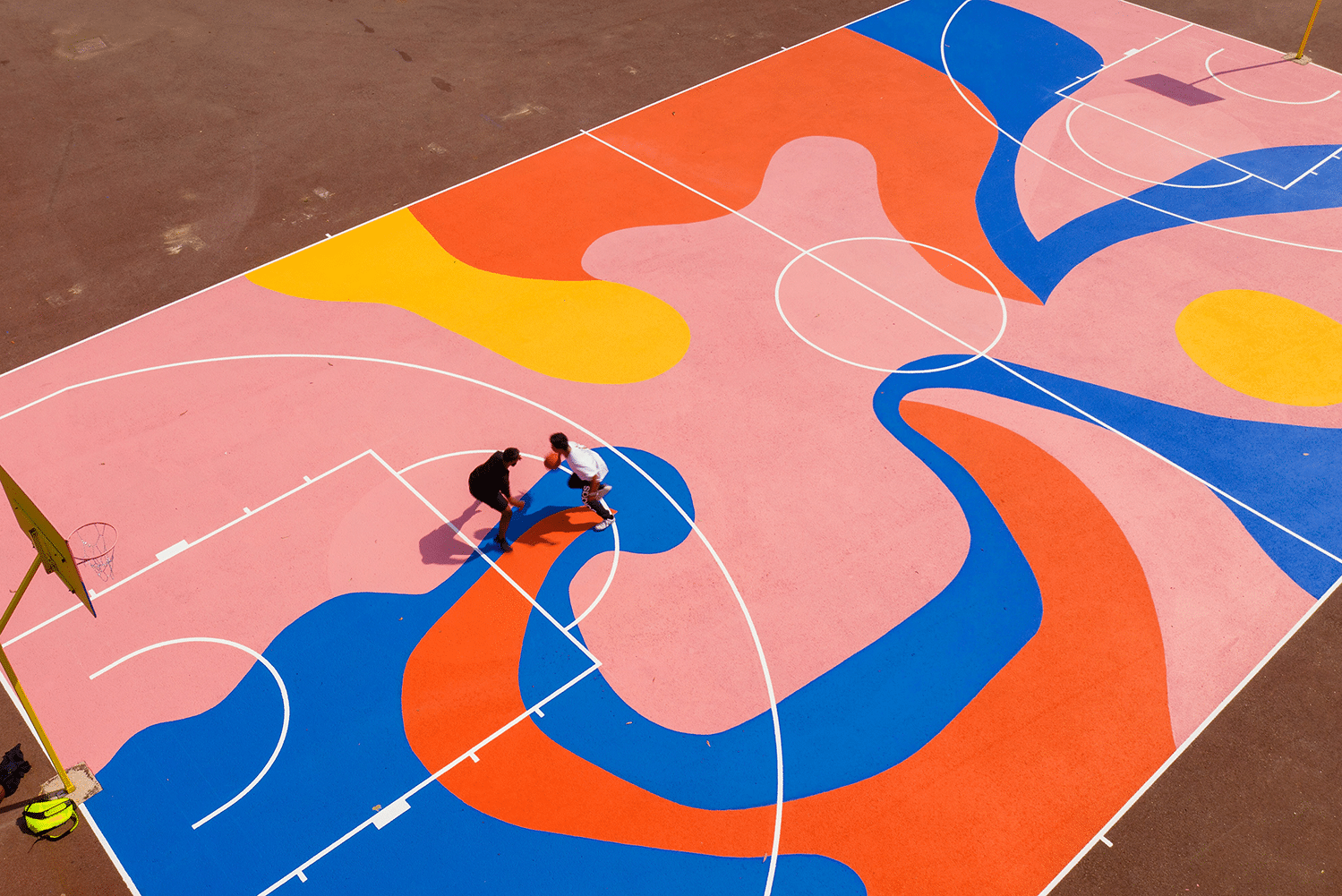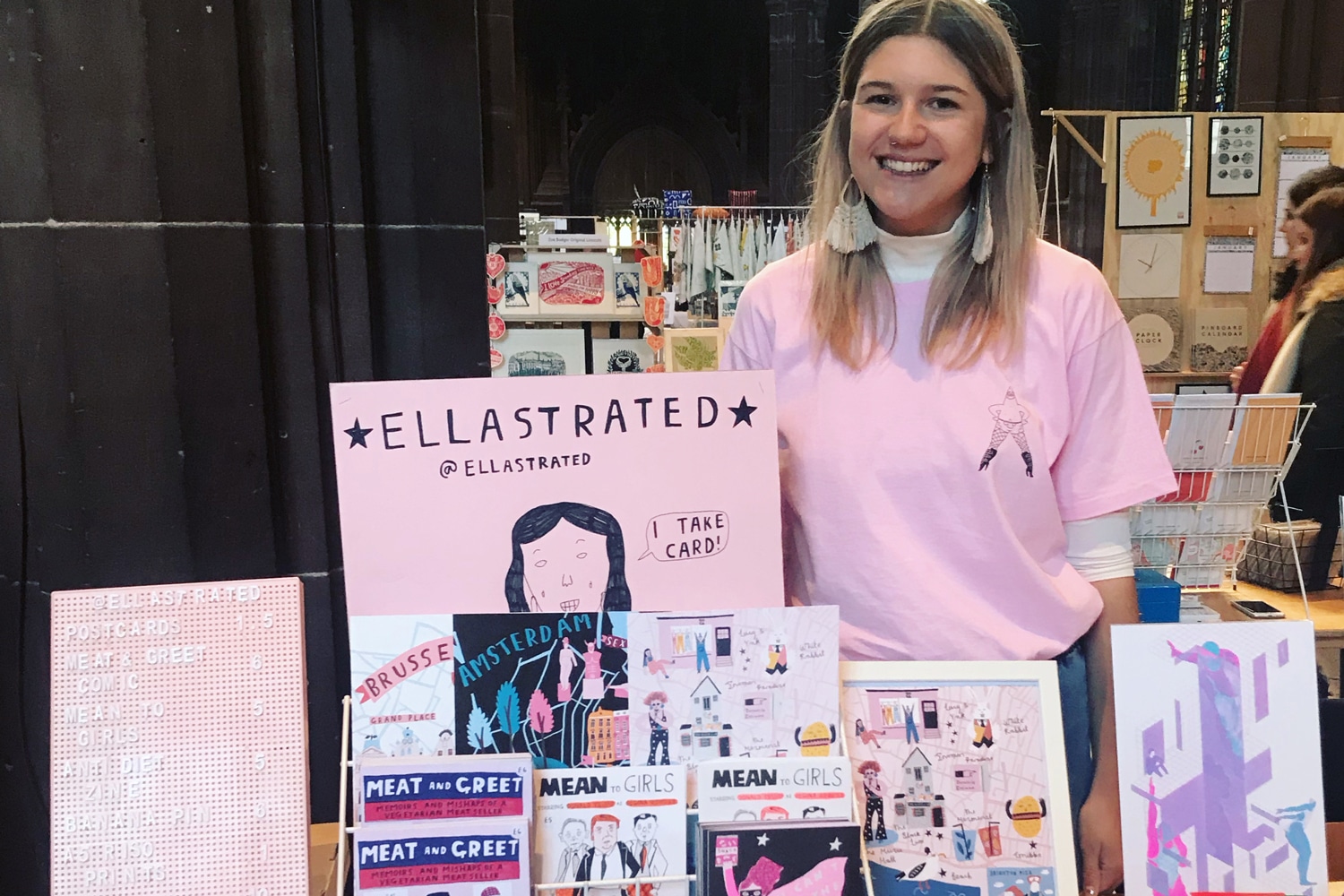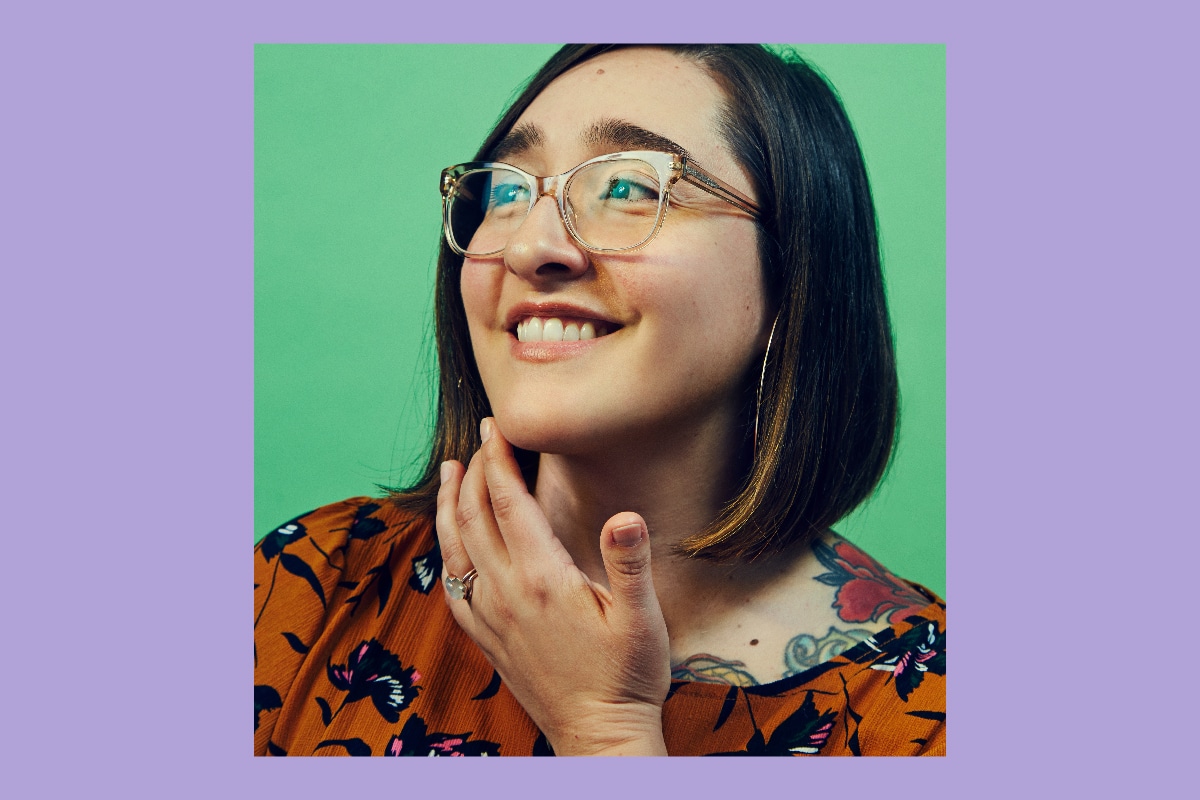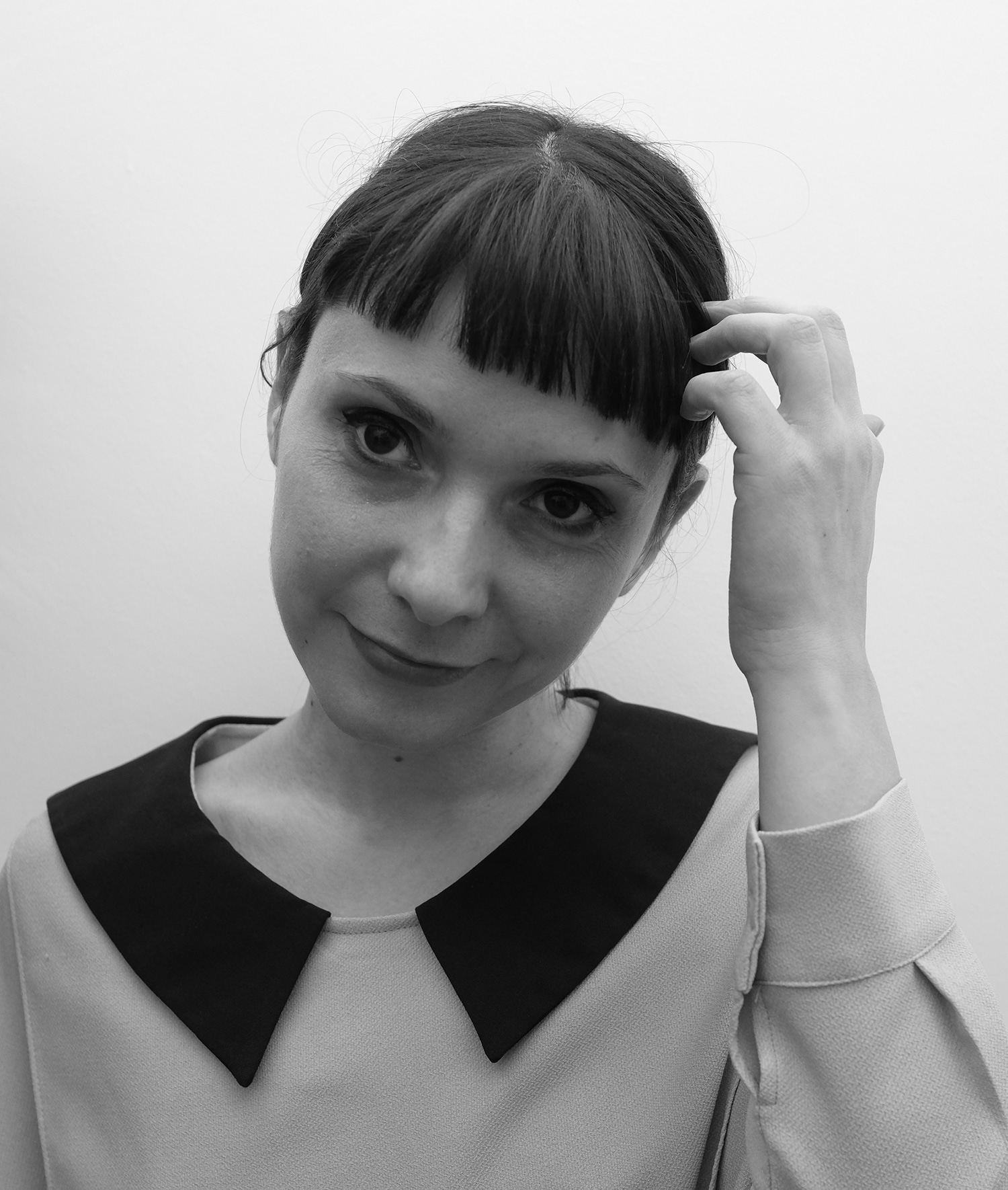
Eleonora Marton is an Italian author and illustrator living and working in London. She studied art and design at the Accademia di Belle Arti in Venice and now divides her time between commissioned work, personal projects and making books.
Eleonora’s illustrations are drawn by hand using brush and ink, watercolour, acrylic, crayons and cut outs that are sometimes edited or coloured digitally. They are simple and bold and often include text that suggests a funny scenario, taking inspiration from a fragment of overheard conversation.
We caught up with Eleonora to talk about her career so far.
Did you always know you wanted to be an illustrator and author?
I knew I wanted to make art since I was a teenager, but it was a few years after finishing my Fine Art BA that I realised I wanted to focus on illustration. Looking back at the stuff I was doing during the BA, I can see that many of the subjects I was exploring are still relevant to me now. I was making big paintings, installations, combining words and bold graphic images. And then I started making zines, simple animations, and art book projects, which I still do. A few years ago I became very interested in children’s books.
How did you get started?
I went to art school from the age of 14 and then studied Fine Art at university, both in Venice, Italy. My older brother went to the same schools and I think that seeing what he was doing and hearing about it encouraged me to pursue it. I had the best time at high school, we had 8 hours a day of mainly art, sculpture and design classes.
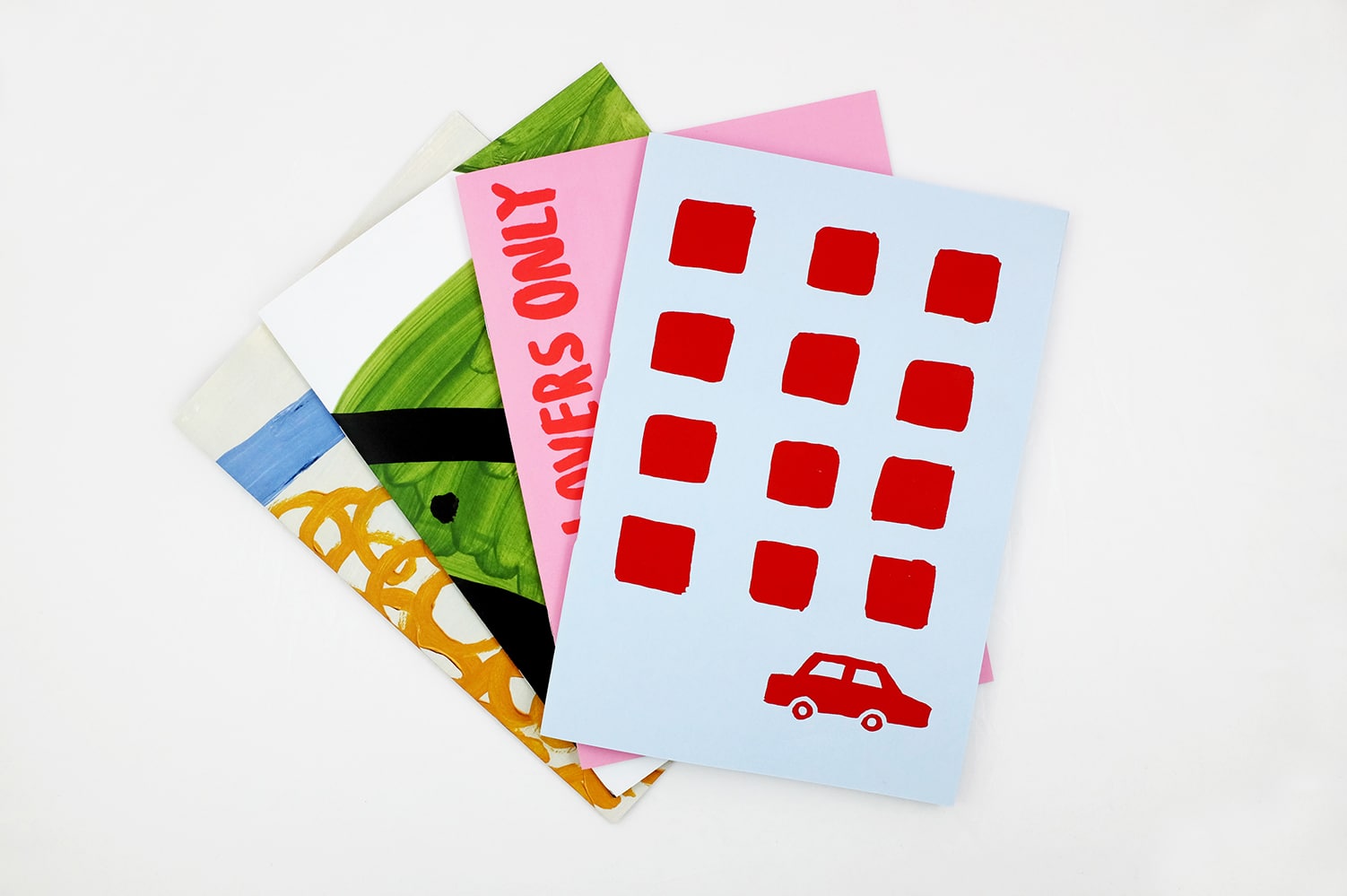
Have you always worked for yourself?
I started freelancing a couple of years after graduation, mainly as a poster designer/illustrator. In the beginning it was very difficult to get enough commissions to sustain my practice, but I kept developing my work and trying to connect with people I wanted to work with. When I moved to London in 2013 I made the choice to drastically edit my website, getting rid of all the work I didn’t find interesting anymore and focusing on self-initiated projects. A part time job in a cafe helped me just enough to pay my rent and living costs, allowing me to feel more free in my practice, less stressed out about money, and very productive. During this period my work progressed a lot, and I understood better where I wanted to take my practice.
I slowly started to get more steady commissions and opportunities to work on exciting projects and finally after three years I was able to leave the cafe job. Last year I started working with my book agent Debbie Bibo and it’s wonderful to be able to collaborate with her on ideas and projects. I love working for myself, I love the freedom of deciding what to do every day.
It’s tough out there at the moment, how have you been finding it?
Because I work from home, my routine hasn’t changed that much and I feel very lucky that work opportunities didn’t dry up. I live with my partner in a flat (which got much smaller as he was painting in the living room!), but we do have a back garden which I’ve been very grateful for. Of course the anxiety, especially in March and April, was high for everyone and I was doing video calls most evenings with my family and friends.
Let’s talk about your work. Can you describe your style?
I like to think that my style can keep evolving and adapting to different projects, I also like to use many techniques like acrylic, watercolour, ink drawing and collage. But I think what unifies my work is boldness and simplicity. I consider my work to be concept-driven, my sketchbook has more words and phrases in it than doodles.
What is your process like?
It usually all starts with an idea and some written text. I make some very small and super simple sketches and when I can visualise it, I start painting by hand, either with ink, acrylic, or watercolour. If it’s a commission and something that will end up being printed, I draw the layers by hand using a lightbox, scan those drawings and then complete the final image in Photoshop.
I have a quick way of working and the planning often takes more time than the execution. But I do love making long-term and on-going projects, like illustrating in series, making whole books, and year-long projects.
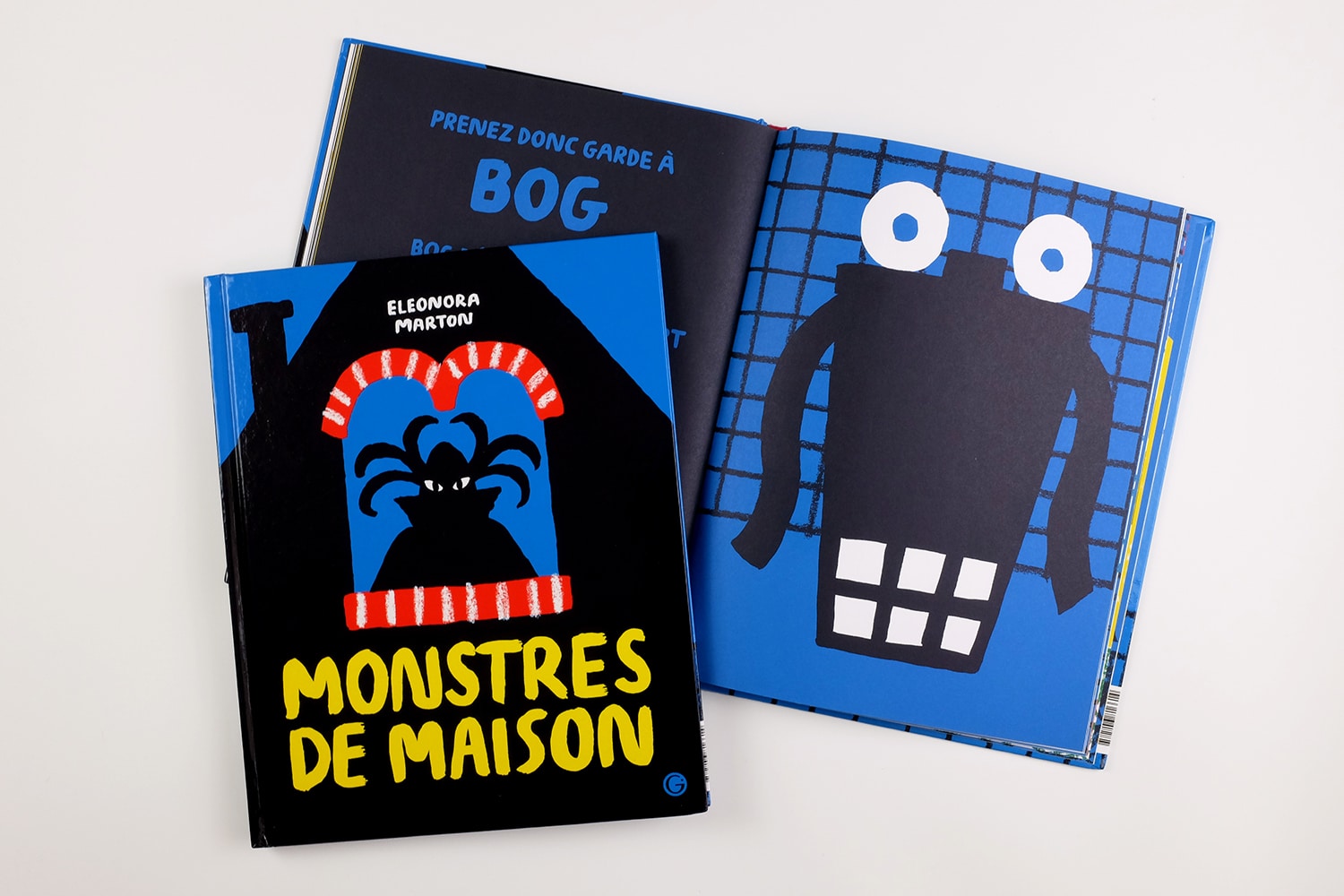
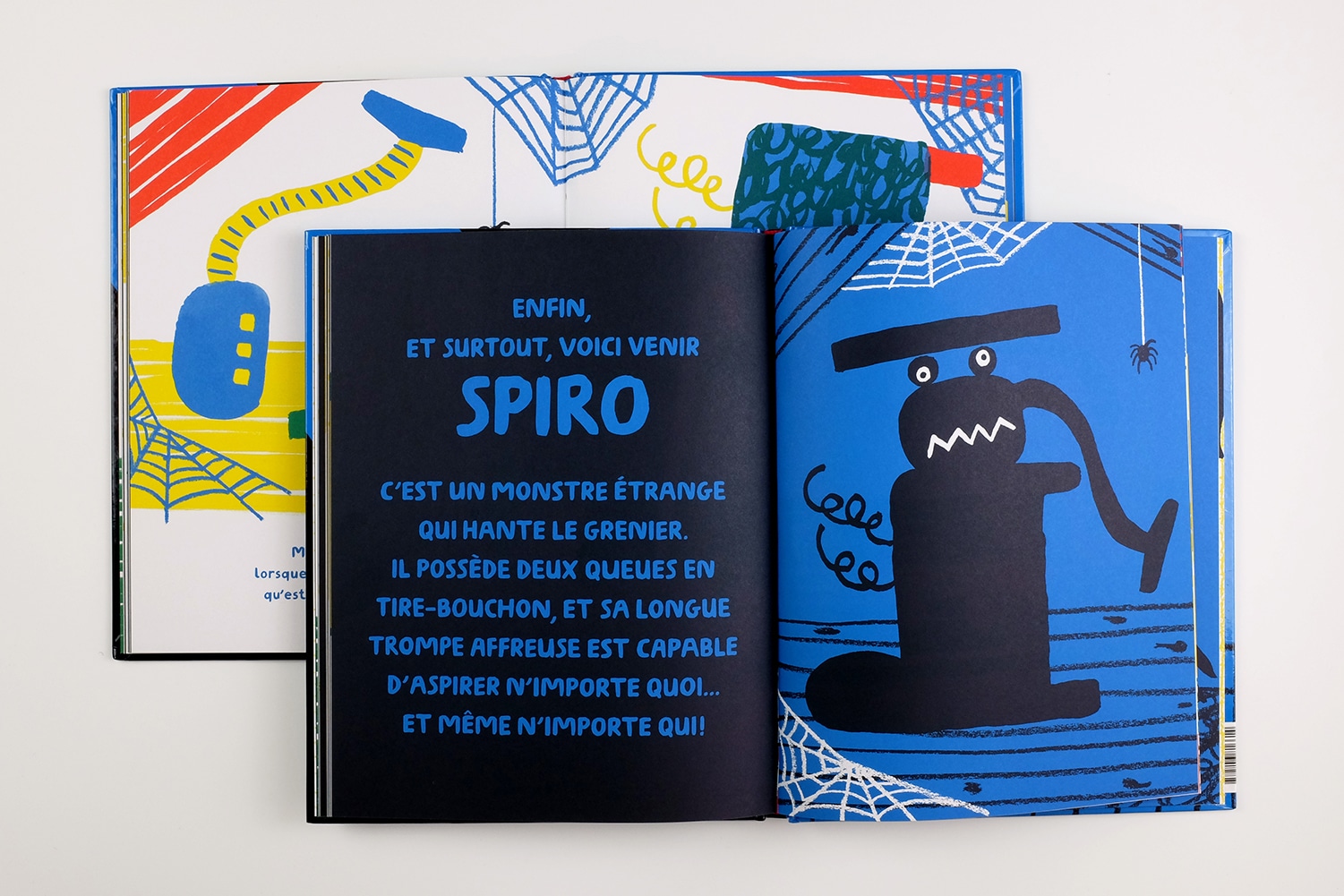
Can you talk us through a couple of your favourite projects?
One would be the first picture book that I also wrote, which was published in France this year and will be out soon in China and Brazil. It’s called House Monsters and it took years to develop! The idea for the book came from noticing how some groups of objects, when seen in the dark, create scary silhouettes. From this simple concept, I sketched some monster characters made up of only 3 mundane objects that you can find in each room of a house. The book alternates between spreads depicting the silhouetted monsters and spreads showing the objects which combine to form them. The book is narrated by a child and describes how the monsters mysteriously vanish in the morning when the sun comes up.
The other project I want to talk about is my on-going Risograph posters. It’s a series of illustrations where sentences and thoughts, or simple daily situations are presented as advertising posters, acquiring the same importance and the same strength as a slogan or a real event. The images are composed of a few simple elements accompanied by text. I found that printing these designs with Risograph works very well, I like being limited in the choice of colours, I love the ink transparency and the imperfection that this printing process adds to the works. I like to imagine one day covering a massive exhibition wall with these.
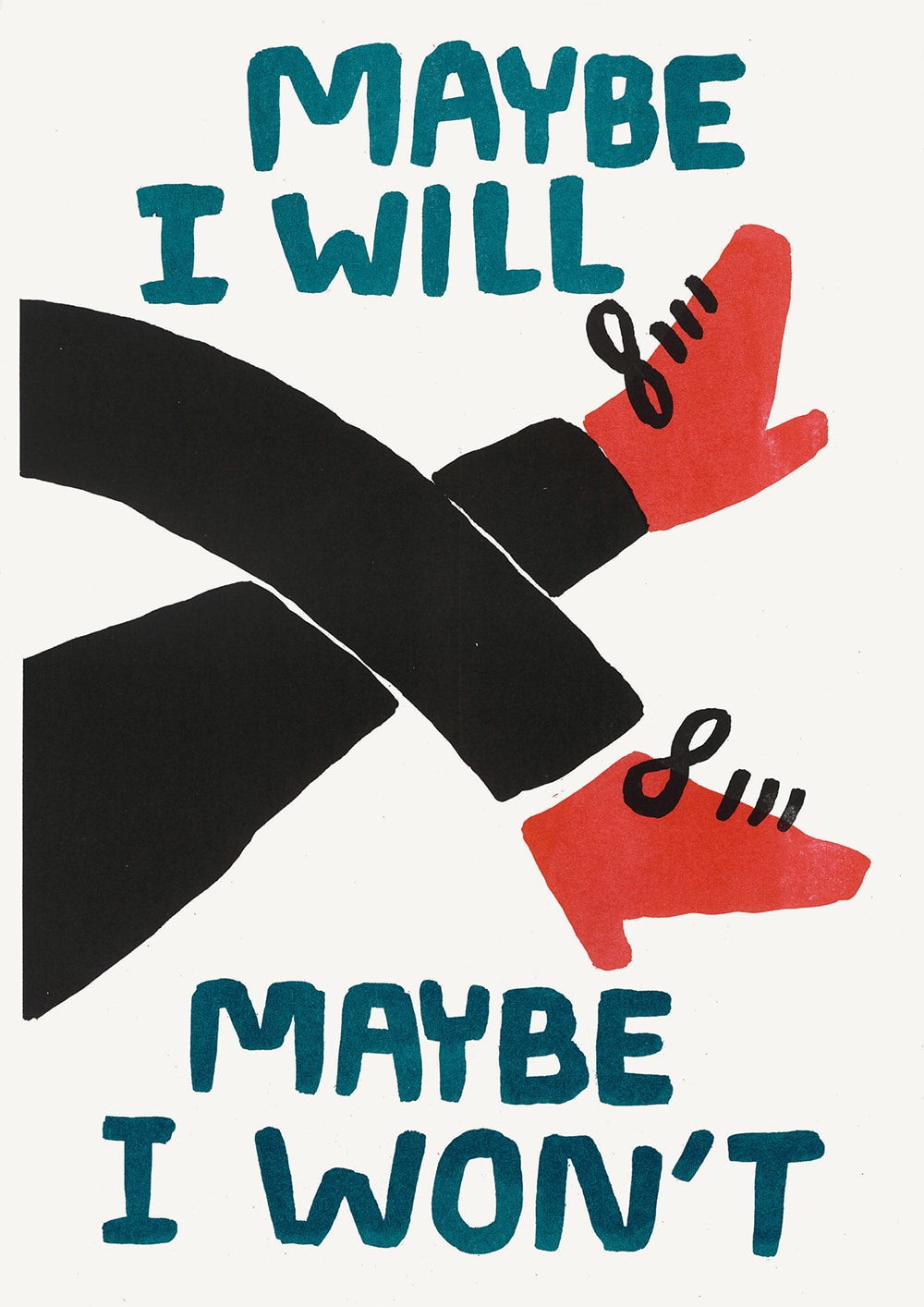
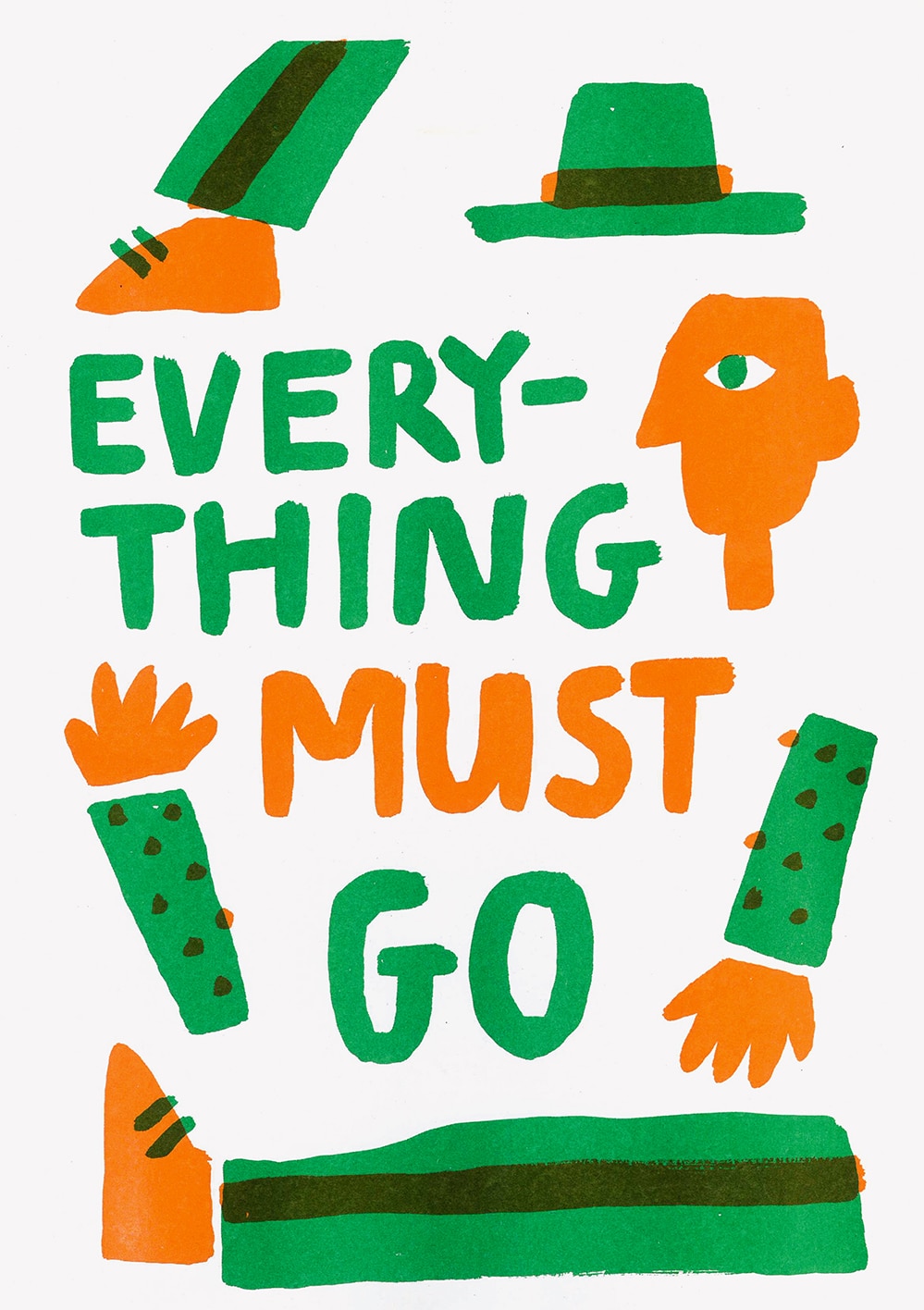
What inspires you?
I find inspiration in the everyday, in what I see and hear around me. It could be anything really, from an object left or lost on the street, to a fragment of a conversation overheard on the bus. These kinds of daily encounters can give me an idea for a poster or an entire project. Of course I also try to see as many exhibitions as I can.
What advice would you give to emerging illustrators?
Be patient and persistent, if this is what you love to do, never give up. Be prepared that it might take time before you can make a living from it. You might need to have a second job or many second jobs, but it’s about finding a way of living/working that allows you time to keep doing your work. Don’t follow trends and don’t let things like the amount of likes and followers your work receives on social media define your idea of success. If you focus on the work itself in a determined way, you will find your voice and the rest will come. I have also always believed in doing things in a DIY way, if you want to make, show or publish something, you can always do it yourself.
